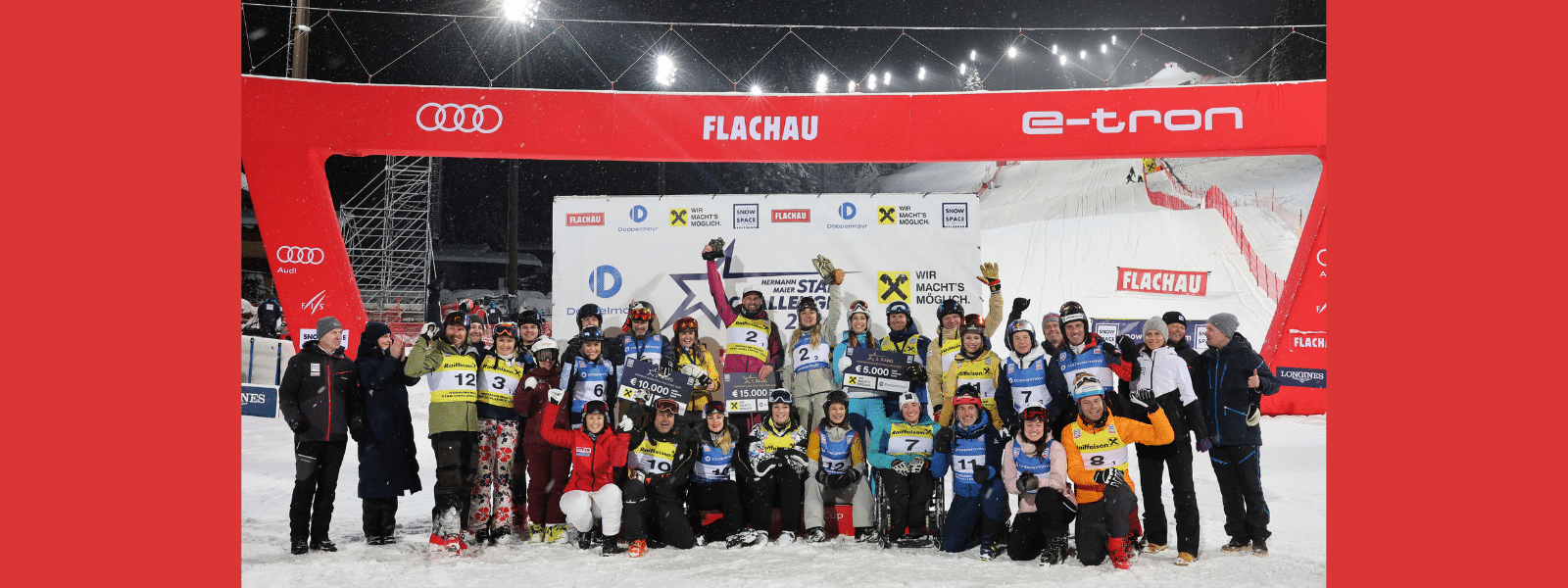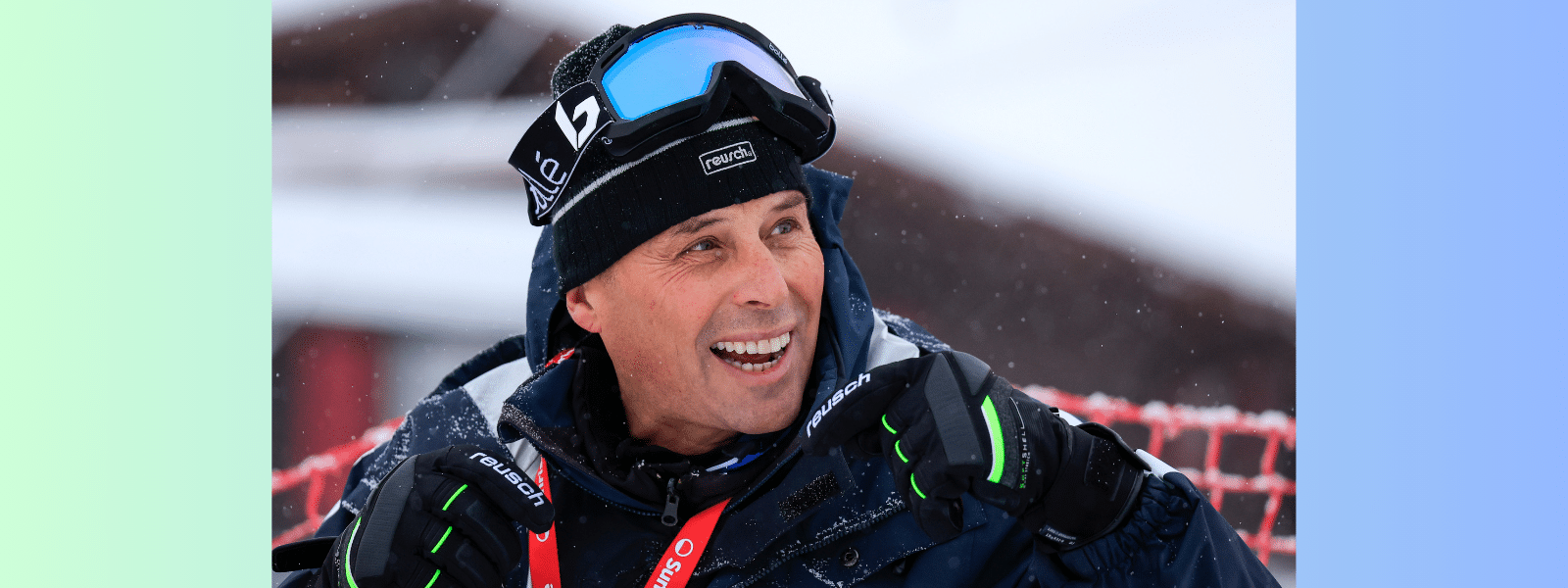Processing Mikaela Shiffrin’s Junior Career as it Comes to a Close
By turning 21, Mikaela Shiffrin has graduated out of the Junior class.
Not to toot our own horn, but Ski Racing has a knack for choosing the Junior Alpine Skier of the Year. Our picks have gone on to win 181 World Cup races, among other achievements.
And our choice on the women’s side this season was the same as it has been the last six seasons — the lovely and oh-so-talented Mikaela Shiffrin.
But the Junior of the Year designation doesn’t go far enough.
Because of her first “major” injury, she missed half of the season and was only able to start in five of the possible 11 World Cup slaloms. She won all of them — and four of those with margins over two full seconds.
She is easily the best junior ski racer in the world. Ever.
At 21 years of age she has amassed 19 World Cup slalom wins, certainly the fastest to accomplish that. It’s pretty easy to check, because there are just six people ahead of her on the all-time slalom win list.
Stenmark was 23. Tomba was 27. Schild was 28 and Schneider was 27. Hess was 24. Kostelic, also 24. So yes, we can say without fear of contradiction, that Shiffrin, as a junior, was “the best that ever was.”
She was particularly electrifying this season. Those win margins are stunning:
- Aspen 1st race: 3.07 seconds
- Aspen 2nd race: 2.65 seconds
- Crans Montana (first race post-injury): 0.45 of a second
- Jasna (when she imagined a bear was chasing her): 2.36 seconds
- Moritz: 2.03 seconds
The closest anyone else came to those margins was Nina Loeseth at Santa Caterina logging in with 1.12 seconds. Otherwise, 0.55 was the widest gap in a woman’s slalom race this past season.
Say it with me: “The Best That Ever Was.”
In the 48 previous seasons, no one had topped three seconds and just six racers had topped two. Shiffrin recorded four in half a season. Say it with me: “The Best That Ever Was.”
True, she did not win a title, and Lindsey Vonn did. But, frankly, Vonn didn’t ski as well as she has in previous seasons, and a couple of her main competitors were missing this year. Vonn also competes best in speed events, where experience on the courses matters a great deal; she also has her support team, amassed during a decade at the top of the game. From this vantage point, Shiffrin was the better American skier, period.
Internationally? With all due respect to Lara Gut, the World Cup’s overall champion, Shiffrin brought more excitement and better execution to the stage than anyone else.
Despite missing a little more than half the season, she drew fans to the sport.
Let’s talk character. There was no whining about her injury. She just went into rehab mode and pursued her dreams. It was a matter of fact to getting back on snow with her age peers. She never felt sorry for herself and even applauded Frida Hansdotter for winning the slalom title. She was a role model by any measure. These are all points in her favor.
You know how skiers tend to step out of their skis and just leave them laying on the snow? Once upon a time, now long ago, we watched Tamara McKinney click into her skis at the top of a racecourse in an area positively littered with other racers’ skis. Her mission was to take a couple fast turns, then hike back up to get ready for the start. But there seemed no path through the maze of scattered skis — not to these eyes anyway. But Tamara was Tamara, and her legendary touch and skill level was such that she skated through the maze undeterred, got to the upper bit of open slope and snapped off her six turns, stopped on a dime and hoofed back up, one ski in each hand.
It was, to me at least, one of the most incredible things ever done on a racecourse.
And McKinney’s era had some great, great slalom skiers, Swiss Erika Hess and Frenchwoman Perrine Pelen are prime examples. The season-long battles between them were astonishing, a delight for the race fan. Those racers were all small and light, darting through the gates with grace and speed like hummingbirds. They were fun. They were true sportswomen.
In a slightly later era, slightly larger skiers emerged on the slalom scene. That includes Anja Paerson and Janica Kostelic, who added power and strength to the game. They went head-to-head often, finishing one-two in 10 World Cup slaloms. The competition was a joy to watch.
Shiffrin is a different category than any of these great champions. She attacks cerebrally and relentlessly. Hours and hours of practice means she makes very few mistakes and knows, by forced patterning, how to react to the few errors she does make. It’s not the competition we tune in to see. It’s Shiffrin, one-on-one against the mountain, the course setter and an occasional imaginary animal. It is a beautiful a thing to watch her race.
Mikaela turned 21 in March, while training for World Cup Finals and before she won her fourth national slalom title by an absolutely astounding 6.7 seconds. I can type a paragraph in less time.
Valedictorian, for sure.
























